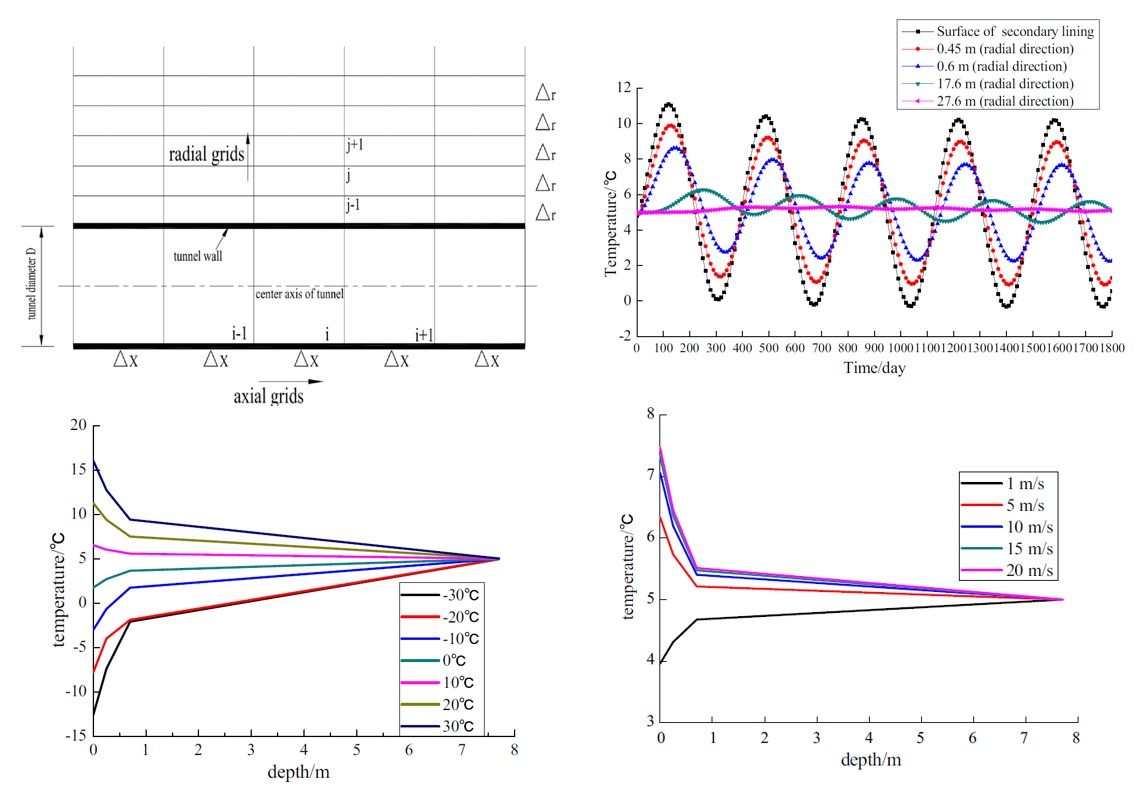XH Zhou, YH Zeng, L Fan. Temperature field analysis of a cold-region railway tunnel considering mechanical and train-induced ventilation effects[J]. Applied Thermal Engineering, 2016, 100:114-124.
Keywords: Cold-region railway tunnel; Mechanical ventilation wind; Train-induced wind; Temperature field; Finite difference; Frozen length
High Lights:
An unsteady-state finite-difference model of cold-region tunnel temperature fields is presented.
The coupled convection–conduction problem is considered.
Effects of mechanical ventilation and train-induced winds on the tunnel temperature distribution are studied.
In situ observed frozen lengths in a cold-region railway tunnel are compared with the calculated results.
Abstract:
In accordance with the unsteady-state finite-difference equations for heat transfer and heat convection in a cold-region railway tunnel, an unsteady-state finite-difference computer model was developed to study the heat convection between the air and the tunnel wall as well as the heat transfer in the surrounding rock and at interfaces between different materials in the structure of the tunnel. The wind speed and wind direction of actual mechanical ventilation wind produced during operation as well as the traininduced wind and natural wind in the tunnel were considered in the analysis of the temperature field distribution of a cold-region railway tunnel under actual periodic variations in entrance wind temperature. Good agreement was observed between the calculated frozen length and the frozen length observed in situ at the entrance of the railway tunnel. The results show that mechanical ventilation winds during operation and train-induced winds significantly influence the temperature field distribution in the tunnel and that the variables associated with mechanical ventilation winds and train-induced winds should be considered in the engineering design of cold-region tunnels. In this way, the temperature field of a railway tunnel can be correctly predicted via finite differencing.
Resource:https://www.sciencedirect.com/science/article/pii/S1359431116300205
